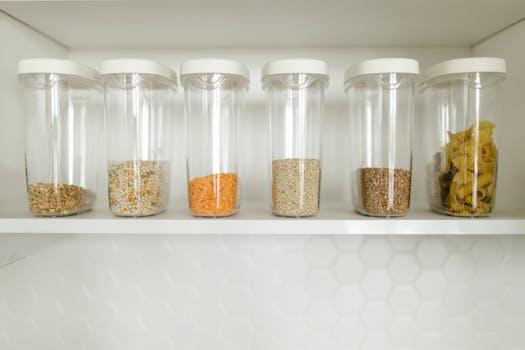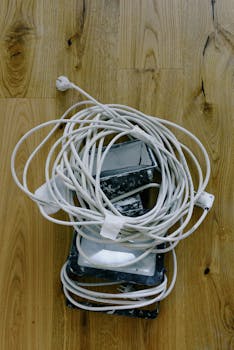Saving Strategies
Frugal Meal Planning: Eat Well Without Overspending
Discover realistic frugal meal planning strategies: actionable rules, budget shopping scripts, template menus, batch cooking, and food waste fixes for delicious, affordable meals you’ll love all year.
Advertisement
Walking past a grocery store, a lot of folks catch themselves tallying up prices in their heads, curious if eating well and saving money can actually be done together. That curiosity fuels the growing interest in smart kitchen strategies like frugal meal planning—where skill beats budget and deliciousness doesn’t get shortchanged.
Balancing taste, nutrition, and spending really matters for everyone from parents managing family dinners to busy singles aiming to stretch paychecks. Nobody wants bland meals just to cut costs, nor to watch groceries spoil before ever becoming dinner.
Dive into this article for a practical toolkit of frugal meal planning spin-offs. Every section unpacks tested approaches, kitchen quirks, or clever rules that help you fill plates with variety and flavor—without letting money slip through your fingers.
Crafting a Foundation: Setting Your Food Priorities and Budget
Before you even jot down your first recipe, it’s essential to be clear about what matters most at your dinner table and what limits your wallet sets. Pinning down these priorities transforms scattered spending into daily habits that bring both comfort and savings.
Imagine a friend saying, “I need filling lunches, but can’t blow my budget on specialty snacks.” By explicitly naming what matters, you can set non-negotiables and trade-offs that anchor your own frugal meal planning process.
Building Your Personal Food Rules: Mini Scripts That Work
Start by writing three food “rules” based on your needs—like “Dinner always includes veggies,” or “No more than $6 per lunch.” Stick them on your fridge for a visual nudge. If in doubt at the store, recite your rules before scanning an aisle.
Let these guidelines evolve. For example, if you found value in prepping protein ahead of the week, that can become a new staple rule: “Batch-cook chicken Sunday nights.” Short scripts keep your focus tight and avoid wandering purchases.
Concrete rules also help when family or roommates pitch impulse buys. Try replying, “That’s outside this week’s plan, but let’s add it to the wish list for next time.” This defuses tension while guarding your priorities and sticking to the script.
Budget Breakdown: Assign a Job to Every Dollar
Divide your food budget right after payday, assigning specific chunks to categories such as breakfasts, lunch ingredients, snacks, and one ‘fun meal.’ Even $5 shifts—like upgrading to in-season berries—make a visible impact on variety.
At checkout, match each item to a budgeted slot. If some items land in gray zones, either trade out or note it for next time. These micro-moves add up, turning abstract budgeting into daily action this month—not just someday.
Wrap up each week by checking what money remains. If all’s spent, make do with pantry staples; if there’s a surplus, applaud progress and plan a small treat meal ahead. That closing ritual boosts confidence and momentum.
| Meal Type | Priority Rule Example | Budget Per Serving | Recommended Frequency | Takeaway Action |
|---|---|---|---|---|
| Breakfast | Always protein-rich | $1.00 | Daily | Batch-prep hard-boiled eggs Sunday night |
| Lunch | Uses leftovers or grains | $2.00 | Weekdays | Double dinner grains for lunch bases |
| Dinner | At least 2 vegetables | $3.00 | Daily | Rotate frozen and fresh produce weekly |
| Snacks | Fruit-focused | $0.75 | 3 times/week | Package single servings right after shopping |
| Fun Meal | One special ingredient | $4.00 | Weekly | Shop for deals on favorites monthly |
Smart Shopping Strategies: Action Steps That Trim Your Bill Instantly
Every trip to the store becomes a chance to put frugal meal planning into practice, from scanning flyers to switching up your route inside the store. Increments matter: saving $2 a trip yields $100+ per year, just from micro-decisions.
Stand out from the crowd by heading down the ‘perimeter’ aisles first—produce, dairy, and bulk bins. Fill your basket with essentials before even glancing at convenience foods, and watch impulse costs melt away.
Prepping a List: The No-Slip-Up Approach
Write your list by grouping items according to store layout and matching them to weekly recipes. This reduces doubled-up purchases and shrinks trips back for forgotten onions or pasta.
Try prepping a quick pantry check before leaving home. Mark on your list any staple running low with an asterisk. Searching your shelves first becomes a weekly game—less waste, fewer forgotten ingredients, and no extra coffee runs.
- Shop stores you know well: Familiarity with aisle layouts saves time, making it easier to avoid non-essentials and stick to your preplanned buy list.
- Choose simple, flexible base items: Stock up on versatile foods such as rice, beans, and frozen mixed veggies—they form reliable backbones for dozens of different meals on a budget.
- Check flyer deals and loyalty discounts: Quickly scan digital flyers for major sales before you leave. Circle the best prices and adapt your weekly menu to use up discounted proteins or produce.
- Buy in reasonable bulk: Avoid warehouse fatigue by sticking to bulk buys on essentials that won’t spoil (oats, pasta), and split costlier items with friends to maximize savings without waste.
- Shop later in the week: Shopping Thursday or Friday evenings can net you discounts on perishable goods—stores clear inventory before the weekend, and it’s a prime moment to freeze or cook items quickly.
Stick to the outer aisles, fill up on the basics, and finish your trip by reviewing your cart for expensive impulse items before checking out. You’ll rarely regret what you put back on the shelf.
Stretching Ingredients with Purposeful Choices
Prioritize multi-use ingredients. An example script: “If I’m buying spinach, can I use it for breakfast and dinner?” Always audit your cart for overlap to guarantee nothing goes forgotten or wasted.
Limiting single-use specialty foods reduces cost and storage headaches. Focus on ingredients that taste just as good in three different dishes across the next week, preventing both boredom and spoilage.
- Transform basics: Turn plain rice into fried rice, burritos, then soup by switching up a few mix-ins and seasonings—maximizing both value and pleasure.
- Freeze meat portions: Break a large protein package into three zip-top bags, label them by day, and save each for different meals. This distributes cost out evenly across the week.
- Piggyback produce: Use half of a bagged salad in tacos, the rest in wraps, plus a leftover sprinkle on eggs the next day. Cross-use is the best path to zero-waste frugal meal planning.
- Choose concentrated flavors: Pick intense seasonings (garlic, ginger, chili) that transform bland base foods into crave-worthy meals with just a pinch. This upgrades cheap staples without overspending.
- Prep snacks from whole foods: Instead of buying granola bars and chips, portion out nuts, fruit, and homemade popcorn—saving both $3–$4 per week and unwanted packaging waste.
Keep an eye on your ingredient overlap and use—it’s the difference between a fridge with options and a fridge destined for food waste. Every overlap means money recouped and less stress about what’s for dinner.
Reusable Menu Templates: Structure Systems That Save Time and Reduce Food Waste
Frugal meal planning shines brightest when routines lock in, slicing decision fatigue and leftovers at the same time. Templates guide both your creativity and resource use, ensuring variety without wasteful shopping or last-minute stress.
Adopting personal menu shells—for example, “Meatless Monday,” “Soup Night,” or “Grain Bowl Friday”—makes shopping and prepping run on autopilot, lowering your mental and financial load each week.
Template Rotation Rules for Smarter Meals
Jot down a seven-day meal template, like building blocks. Sample: Tuesday stir-fry, Friday pasta, Sunday leftovers. Use the same backbone every week, swapping in new veggie, grain, or seasonings for fun upgrades.
This roster method tames food waste naturally. If you buy a bunch of carrots, purposely slot them Tuesday and Thursday: in curry, then in soup. No limp produce staring back at you, just tight ingredient management.
Adapt your template when tastes or needs change: for instance, pivot Soup Night to Salad Night when temperatures heat up. Consistent backbone, flexible topping—your savings and flavor stay intact.
Batch Cooking: Process Made Practical
Once a week, dedicate a two-hour window to bulk prepping proteins, grains, and roasted veggies. Portion half to eat in the next three days; freeze the rest in reusable containers. Your future self will thank you on busy nights.
Spreading prepping across categories keeps meals from getting monotonous. A five-pound bag of chicken thighs gets divided into taco filling, soup protein, and baked pieces—each prepped with different seasonings or add-ins.
Batch-cooked grains form an inexpensive, ready base for new meals. Store two small containers in the fridge, the rest in the freezer for backup. Label by meal type so you grab the right box every time.
Pantry Perfection: Stock Staples to Bridge Gaps Effortlessly
Building a responsive pantry lets you whip up meals on busy nights without running to the store. Each staple becomes an insurance policy against overspending or last-minute takeout cravings.
Anchor your pantry with shelf-stable grains, canned proteins, and ‘just add flavor’ items so you always have a foundation for easy, affordable meals, especially when the fridge is nearly empty.
Upgrade Your Staples for Versatility
Choose foundational pantry foods with long shelf lives and high mileage: pasta, brown rice, dried beans, lentils, canned tomatoes, and oats. Arrange them facing forward for quick scanning at a glance.
Invest in an organized spice rack: even a small lineup of cumin, dried basil, paprika, and crushed red pepper transforms basic grains or beans into international dishes at nearly no cost.
Rotate and restock your pantry on a monthly schedule. Every four weeks, set aside 10 minutes to pull forward what’s oldest and jot down what’s running low on a new list for your next shop.
Speedy Meals from Just Pantry Items
Combine a can of beans, diced tomatoes, and a cup of frozen corn for a quick chili; add rice or quinoa to boost fullness. Stir through leftover greens or sprinkle cheese if on hand.
Mix canned tuna with pasta, frozen peas, and a dollop of mayo or plain yogurt for a 10-minute lunch—filling and ultra-affordable. These ‘pantry-first’ meals buy you flexibility on nights when you’re out of fresh food.
Set a goal to build three unique meals from pantry-only ingredients each month. Document favorite combos, then refresh your staples as needed, cementing a sustainable, frugal meal planning routine.
Turning Leftovers Into Planned Wins: Next-Level Strategies to Save
With foresight, leftovers evolve from accidental side note into an intentional money-saver. Planning for extra portions ensures every bit gets eaten, fueling fast lunches or bonus dinners without extra shopping.
Use a marker to date and label leftovers before refrigerating; this simple move increases your odds of using them up and never wondering, “Is this still safe?”
Remix and Repurpose Leftovers Efficiently
Shift mindset from “reheat and repeat” to “create something new.” Roast chicken on Sunday transforms to chicken tacos Monday and a hearty soup Wednesday, stretching your grocery dollars without palate fatigue.
Keep a go-to list of ‘remix’ meals taped inside a cupboard. For example: rice becomes fried rice, mashed potatoes become pancakes, roasted veggies top a pizza. Each makeover prevents boredom and rescue dollars from the garbage.
Practice the two-day rule: plan to finish leftovers within 48 hours to avoid forgotten tubs hiding in the back of your fridge. This habit alone slashes both food waste and stress eating.
Rotate Freezer Meals for Peak Freshness
Portion and freeze leftovers in single-meal servings rather than family-size tubs—quicker to thaw, and more useful for unexpected solo lunches. Clearly label by ingredient and date, so nothing becomes a freezer mystery.
Check your freezer inventory at the start of each week, choosing one or two items to eat right away. If something’s getting old, prioritize it in your next meal template.
Pair old freezer meals with fresh sides—salad, bread, or yogurt parfait—for a mix of textures and temperatures that make basic meals feel special again. This bridges gaps and keeps frugal meal planning routines feeling fresh.
Eating Out Strategically: Make Restaurants Part of Your Plan Not the Enemy
Restaurant meals needn’t derail your budget. The key is deciding ahead how eating out fits your financial and nutrition goals—not treating it as a fallback or impulse after a tough day.
Assign a monthly cap and list the restaurants you truly want to visit, focusing on experiences like family traditions, happy hours, or rare treats—not just weekly defaults.
Leverage Specials and Share Dishes
Take advantage of weekday specials or lunch deals for lower menu prices, especially on items like salads or protein bowls, which can become two meals if you ask for an extra container up front. This approach makes every dollar buy more than usual.
Split entrees or appetizers with a friend. For example, two people splitting an entrée and salad often leaves both satisfied and trims the total check. Don’t hesitate to ask servers for extra plates, and clarify who’s splitting what before ordering.
Sip water instead of ordering drinks to dodge high markups. When you really want a beverage, check if there’s free refills or bring a reusable cup for coffee. Little changes add up in frugal meal planning over time.
Honor Your Favorites Without Sabotage
Write down your top three can’t-miss restaurant meals each season, then plan visits to enjoy them with intention and zero impulse-driven guilt. This makes eating out feel celebratory, not careless.
Treat these favorites like planned holidays: look forward, budget specifically, and build anticipation. Share future plans with friends or family to keep social momentum without weekly blowouts.
Leaving the rest for home meals means spending at restaurants feels extra memorable, and your overall savings stay on track. The “special, not routine” mindset keeps your plan fun and your wallet happy.
Finding Joy in Frugal Cooking: Embrace the Challenge and Savor Small Wins
Making frugal meal planning part of your life isn’t just pragmatic; it’s a creative challenge that can spark genuine excitement. Every small win—like a new recipe from the pantry—can feel satisfying and empowering.
Over time, your kitchen becomes a space for exploring new flavors, testing old favorites with new twists, and celebrating progress, not just saving dollars.
Treat Cooking as a Playful Experiment
Next time you try a budget meal, swap one standard spice for something bolder, or add a garnish you haven’t used before. Notice how changing one element transforms the whole meal’s vibe—like swapping paint colors on a familiar wall.
Share your creations, even casually—a quick photo texted to a friend, or a “taste test” night with roommates, turns solitary saving into a communal celebration. These shared moments make every meal feel bigger-than-budget.
Set micro-challenges: “Can I craft three dinners for under $10 this week?” Reward yourself for hitting milestones, and let the process fuel your enthusiasm for steady, sustainable growth.
Smart Meal Planning for Lasting Results
Frugal meal planning isn’t about restriction—it’s about choice and creativity. Build a plan that tips the balance toward financial wellness while tasting better than any bland, so-so ‘budget food’ stereotype.
Building habits around conscious budgeting, smart ingredient choices, and inventive recipes means your kitchen is a toolbox, not a trap. You’ve now got practical, step-by-step methods to make the most of every trip and every ingredient.
The next time you map out meals or tally grocery receipts, remember: every mindful step in frugal meal planning transforms dinnertime into an act of empowerment, feeding both body and bank account.
Frequently Asked Questions
What’s the best way to start frugal meal planning if I’m completely new?
Begin with one week’s worth of simple recipes using what you already have in your pantry. Create a tight shopping list, set a spending goal for just those meals, and adjust as you learn what your household really enjoys.
How do I handle cravings for unhealthy or convenience foods on a budget?
Allow for the occasional treat in your plan to avoid feelings of restriction. Strategically plan for simple, satisfying snacks—like air-popped popcorn or homemade trail mix—to curb impulse buys and keep your routine sustainable and enjoyable.
Is it really cheaper to cook every meal at home?
Home-cooked meals are usually more cost-effective when considering portion size and leftovers. Keep a log of eating out versus cooking for a month and compare your total spend to truly see the difference in your own routine.
Can meal prepping save both time and money?
Batch prepping protein, grains, and vegetables once or twice a week minimizes both kitchen time and food waste, leading to fewer impulse takeout orders. This habit streamlines your week and lets you adapt quickly when plans change.
What should I do with fresh foods about to expire?
Scan your fridge for soon-to-expire produce, dairy, or bread every few days. Chop, freeze, or cook them into soups, stir-fries, or casseroles to prevent waste. Quick action turns possible loss into an unexpected bonus meal.





